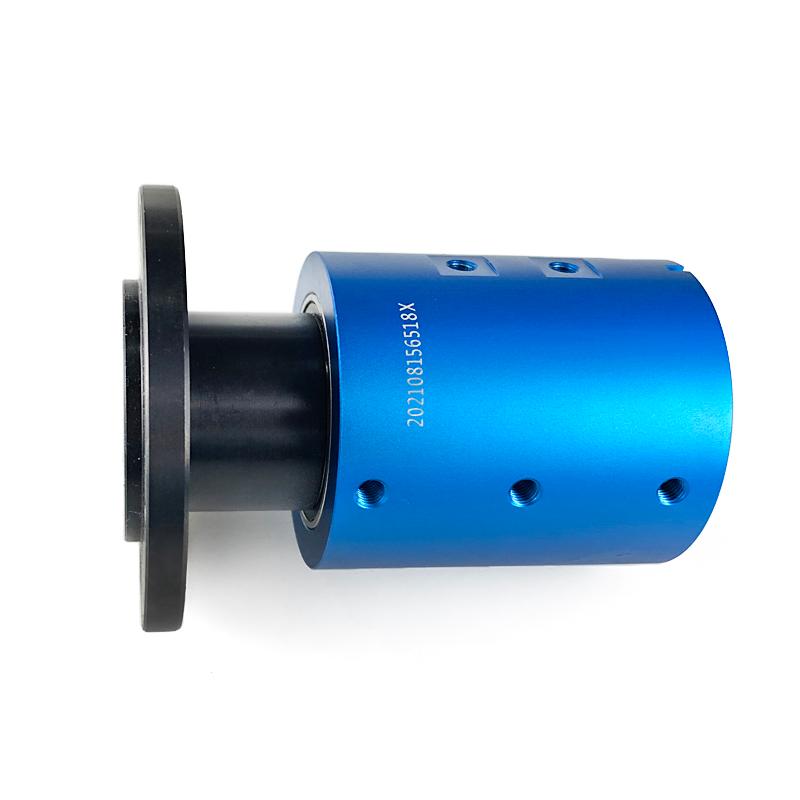Pneumatic Slip Rings, also known as rotary unions or rotating joints, are vital devices in the world of engineering, enabling the transmission of power and data during unrestrained, continuous rotation. This article takes a deep dive into the fascinating world of Pneumatic Slip Rings.
Demystifying Pneumatic Slip Rings
Pneumatic Slip Rings, essential components in numerous industries, facilitate the transfer of power, signals, and fluids between stationary and rotating parts of a system. These specialized electromechanical devices are meticulously crafted to allow continuous transmission during constant rotation without hindering the flow of data or causing damage to the components.
Understanding the influence and working principles of Pneumatic Slip Rings is crucial to fully grasp their significance in various engineering applications.
Definition and Essence of Pneumatic Slip Rings
A Pneumatic Slip Ring, also known as a rotary union or rotating joint, is a mechanical device designed to provide a reliable connection between a stationary source and a rotating structure. This connection typically includes the transfer of power, electrical signals, and fluids (such as air or coolant) during rotation. The essence of these rings lies in their ability to maintain consistent conductivity while ensuring minimal wear and tear, electrical noise, and interference.
How Pneumatic Slip Rings Work
Pneumatic Slip Rings comprise several key components, including conductive materials, rotatory contacts, brushes, and seals. The system operates through the interplay between these components.
The stationary section, which is connected to the power or data source, contains brushes that are typically made of precious metal alloys or conductive graphite. These brushes maintain contact with the rotating section’s conductive rings. The conductivity between the brushes and the rings ensures seamless transmission of power/data between the stationary and rotating parts.
In the case of fluid transmission, specialized seals are integrated into the design to prevent leakage. These seals, made of rubber, Teflon, or other suitable materials, ensure a tight, secure seal between the rotating and stationary parts, allowing the fluid to flow uninterrupted while preventing leaks and undesired mixing of fluids.
By maintaining constant contact between brushes, rings, and seals, Pneumatic Slip Rings ensure a smooth and effective transfer of power, signals, and fluids throughout the rotation process.
The Functionality and Designing of Pneumatic Slip Rings
Designing Pneumatic Slip Rings is a complex process that demands an understanding of operational requirements, engineering precision, and material selection. This section will delve into the intricate details of a Pneumatic Slip Ring’s functionality and the challenges that designers face when crafting these revolutionary devices.
Functionality of Pneumatic Slip Rings
The functionality of a Pneumatic Slip Ring depends on the seamless transmission of power, electrical signals, and fluids among the system’s rotating and stationary components. The device’s design must adequately provide continuous connectivity, efficient energy transfer, and leak-proof fluid transmission while minimizing component wear and signal disturbances.
To achieve these functions, the devices are often designed with:
- Precious metal or conductive graphite brushes for steady electrical conductivity.
- A specific number of poles (or circuits) for the required power/data transfer.
- Separate fluid transmission channels, utilizing seals to prevent leakage.
- High-quality bearings to facilitate smooth rotation and reduce friction.
The overall functionality must then be optimized for specific applications by considering factors such as operational environment, rotational speed, torque, temperature, longevity, and system integration.
Design Challenges and Solutions
When designing Pneumatic Slip Rings, engineers and inventors face several design challenges that can impact performance, reliability, and device longevity. Some common challenges and their corresponding solutions are as follows:
- Managing Pressure Differentials: In fluid transmission channels, pressure differentials can lead to leakage or failure. Designers must adequately balance these pressures using specially designed seals and pressure-resistant materials.
- Temperature Regulation: Elevated temperatures can cause changes in material properties, leading to premature wear or failure. Engineers must meticulously select materials and design cooling mechanisms to keep temperatures within allowable limits during operation.
- Signal Integrity: High-speed data connections often demand minimal interruptions or interference during transfer. Designers must carefully choose materials and integrated technologies like shielded cables or advanced contact materials to ensure signal integrity.
- Seal Wear: Over time, seals experience wear, which can lead to fluid leakage or mixing. Designers must select durable materials and modify seal geometry/configuration, potentially including backup seals, to minimize wear and maintain leak prevention.
By addressing these challenges through innovative solutions, Pneumatic Slip Rings can reach optimal performance and achieve the desired functionalities.

Pneumatic Slip Rings Technical Specifications
Pneumatic slip rings are specialized components used in applications where both electrical signals and pneumatic (air or gas) power need to be transferred between a stationary and a rotating part. These slip rings are commonly used in automation, robotics, medical devices, and other industrial applications. Here are the typical technical specifications you might find for pneumatic slip rings:
1. Electrical Specifications:
- Circuits: Number of electrical channels (e.g., 2, 4, 6, 12, etc.)
- Current Rating: Maximum current per circuit (e.g., 2A, 5A, 10A, etc.)
- Voltage Rating: Maximum voltage per circuit (e.g., 120V, 240V, 480V, etc.)
- Electrical Noise: Maximum electrical noise (e.g., 10 milliohms)
- Insulation Resistance: Minimum insulation resistance (e.g., 500 MΩ at 500VDC)
- Dielectric Strength: Minimum dielectric strength (e.g., 1000V @ 50Hz)
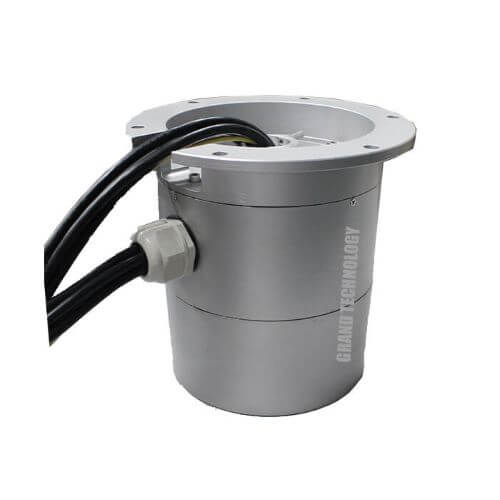
2. Pneumatic Specifications:
- Channels: Number of pneumatic channels (e.g., 1, 2, 3, etc.)
- Pressure Range: Operating pressure range (e.g., 0-150 psi, 0-10 bar)
- Port Size: Size of the pneumatic ports (e.g., 1/8″ NPT, 1/4″ BSP)
- Flow Rate: Maximum flow rate per channel (e.g., 30 SCFM at 100 psi)
- Media Compatibility: Types of gases or air that can be used (e.g., compressed air, nitrogen)
- Leakage: Maximum allowable leakage (e.g., less than 0.01 psi per minute)
3. Mechanical Specifications:
- Speed: Maximum rotational speed (e.g., 100 rpm, 500 rpm)
- Torque: Rotational torque (e.g., 0.1 Nm, 1 Nm)
- Temperature Range: Operating temperature range (e.g., -20°C to +80°C)
- Materials: Housing and sealing materials (e.g., aluminum, stainless steel, nitrile rubber)
- Ingress Protection: IP rating for dust and water resistance (e.g., IP65, IP67)
4. Environmental Specifications:
- Operating Temperature: Range of operating temperature (e.g., -20°C to +80°C)
- Storage Temperature: Range of storage temperature (e.g., -40°C to +85°C)
- Humidity: Operating and storage humidity levels (e.g., 10% to 90% non-condensing)
5. Additional Features:
- Connector Type: Type of electrical connectors (e.g., terminal blocks, flying leads)
- Mounting Options: Mounting configurations (e.g., flange mount, through bore)
- Maintenance: Maintenance requirements and intervals
- Certifications: Compliance with industry standards and certifications (e.g., CE, RoHS)
Delving Into the Diversity of Pneumatic Slip Rings
The distinctive needs and challenges posed by varying industries lead to an extensive range of Pneumatic Slip Rings with unique specifications and applications. These specially crafted devices cater to a broad spectrum of requirements in mind, such as size restrictions, power loads, and data transference speed.
Types and Models of Pneumatic Slip Rings
Some prominent types and models of Pneumatic Slip Rings include:
- Mini Slip Rings: Compact, lightweight, and suitable for space-constrained applications, these devices provide seamless transmission while occupying minimal space.
- High-Speed Slip Rings: Designed to accommodate high rotational speeds without sacrificing performance, these rings ensure uninterrupted transmission for applications with demanding speed constraints.
- Ethernet Slip Rings: Specially engineered for high-speed data transmission, these slip rings employ advanced contact materials and technologies to maintain signal integrity and cater to modern communication requirements, including Gigabit Ethernet connections.
- Power & Signal Combination Slip Rings: Uniquely created for co-transmission of large power loads and low-level electrical signals, these devices combine high current-carrying capacity with electrostatic shielding to maintain signal integrity.
- High-Temperature Slip Rings: Designed to function in high-temperature environments, these slip rings benefit from special material selection, construction, and heightened heat dissipation to ensure durability and operational efficiency.
- Swivel Ring Assemblies: These assemblies are designed to incorporate both fluid and electrical transfer in one device, simplifying integration and streamlining rotary transfer applications.
Unique Features and Applications for Each Type
Each type of Pneumatic Slip Ring possesses distinctive features and applications:
- Mini Slip Rings: Military-grade connectors, compact size, and ease of installation make these suitable for security systems, medical equipment, or miniature precision instruments.
- High-Speed Slip Rings: Enhanced performance at high rotational speeds, advanced materials, and low-resistance designs make these rings ideal for power generation applications, such as wind turbines or electric vehicle charging stations.
- Ethernet Slip Rings: High-data-rate capabilities, minimal signal loss, and EMI shielding cater to applications in surveillance systems, radar antennae, and industrial automation networks.
- Power & Signal Combination Slip Rings: Dual capacity for power and signal transfer finds applications in heavy machinery, offshore equipment, and heavy-duty cranes.
- High-Temperature Slip Rings: Uncompromised performance in extreme temperature conditions makes these rings suitable for applications in steel mills, glass manufacturing facilities, or petrochemical plants.
- Swivel Ring Assemblies: All-in-one rotary transfer solution finds uses in shipbuilding and offshore equipment, robotics, and process industries requiring simultaneous electrical and fluid transfer.
In summary, understanding the diverse array of Pneumatic Slip Rings available can help users better identify the suitable device for their specific application, ensuring optimal performance and system reliability.
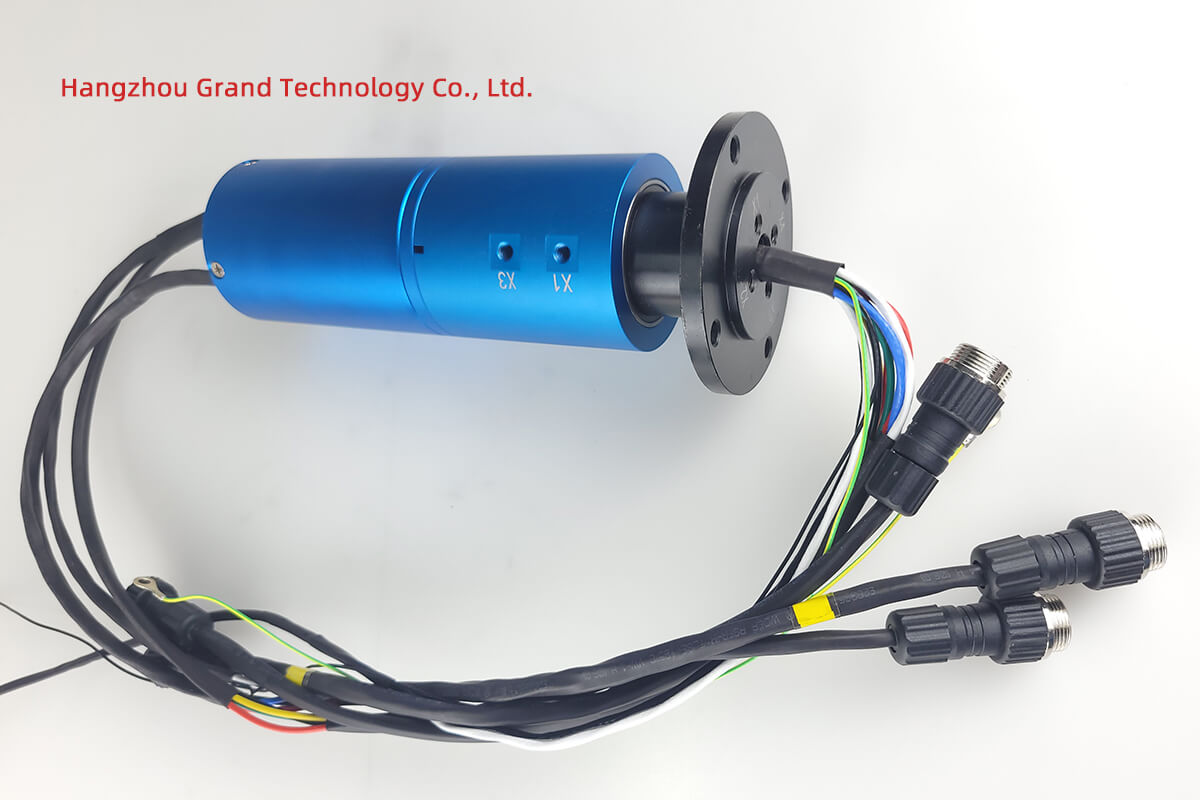
Benefits of Using Pneumatic Slip Rings
The successful integration of Pneumatic Slip Rings in various industries is the result of the numerous benefits they offer. These benefits extend beyond the efficient transfer of power, signals, and fluids, resulting in advantages in performance, longevity, and cost. This section outlines the key benefits of using Pneumatic Slip Rings over other types of slip rings and their positive impact on system performance.
Advantages Over Other Types of Slip Rings
Pneumatic Slip Rings offer several significant advantages over alternative slip ring types, including:
- Simultaneous Transfer: Pneumatic Slip Rings facilitate the simultaneous transfer of electrical power, signals, and fluids (such as air, gas, or coolants), removing the need for separate connectors and streamlining system configurations.
- Minimal Downtime: The advanced materials and design of Pneumatic Slip Rings reduce wear, friction, and contamination, resulting in improved reliability and minimized system downtime.
- Low Electrical Noise: Enhanced electrostatic shielding and contact materials contribute to low electrical noise and improved signal integrity, particularly beneficial for high-speed data transmissions or sensitive instrumentation.
Enhancements in System Performance
The incorporation of Pneumatic Slip Rings can result in considerable system performance improvements:
- Increased Efficiency: With the seamless transfer of signals, power, and fluids, processes can run more efficiently, maximizing system output as well as minimizing energy loss and signal degradation.
- Compactness: By integrating multiple functions into a single device, Pneumatic Slip Rings reduce the need for additional components and promote compact, streamlined system designs.
- Flexibility: Pneumatic Slip Rings provide increased flexibility in terms of system integration, accommodating multiple channels, fluid types, operational speeds, and environmental conditions.
Cost Benefits and Longevity
Pneumatic Slip Rings offer cost benefits and increased operational longevity:
- Reduced Maintenance Costs: By minimizing wear and downtime, Pneumatic Slip Rings contribute to reduced maintenance and replacement costs.
- Less Component Wear: The use of specialized materials and engineering practices prolong the lifespan of the rings, brushes, seals, and other components, yielding cost savings in the long run.
- Increased System Lifespan: The improved performance and efficiency of systems equipped with Pneumatic Slip Rings lead to a longer operational life, proving cost-effective as organizations maximize the return on their investments.
In conclusion, Pneumatic Slip Rings exhibit numerous advantages and benefits compared to other slip ring types, emphasizing their popularity and widespread adoption across various industries and applications. Their influence on the enhancement of system performance, durability, and cost-efficiency makes them integral components for many revolving electromechanical systems.
Applications and Use Cases of Pneumatic Slip Rings
The diverse feature set of Pneumatic Slip Rings facilitates their adoption in a myriad of industrial settings and areas of technology. Beyond their conventional applications in rotary systems requiring continuous electrical and fluid transmission, these devices play a pivotal role in several sectors, influencing system performance and capabilities. This section presents a comprehensive review of some notable applications and use cases of Pneumatic Slip Rings.
Industrial Applications
- Wind Turbines: High-energy wind turbines make extensive use of High-Speed Pneumatic Slip Rings, facilitating the transmission of power, signals, and hydraulic fluids from the stationary turbine nacelle to the rotating blades.
- Medical Equipment: In advanced medical imaging equipment, such as CT scanners, Pneumatic Slip Rings transfer power and data to the rotating parts while also ensuring the stable supply of coolant or gas, ensuring the integrity of the imaging process.
- Manufacturing Machinery: In various rotating assemblies used in heavy machinery, Pneumatic Slip Rings help ensure flawless power transmission, signal communication, and fluid supply, enhancing machine performance and safety.
Defense and Aerospace Applications
- Radar Systems: Radar antennas heavily rely on Pneumatic Slip Rings for the efficient transmission of power and high-speed data while rotating, aiding in the reliable detection and tracking of targets.
- Satellite Communication Systems: In satellite communication devices, Ethernet Pneumatic Slip Rings facilitate high-speed data transmission, ensuring seamless communication with satellites, essential for navigation, weather monitoring, and defense capabilities.
Robotics and Automation
- Robotic Arms: Precise movements of robotic arms are enabled by Pneumatic Slip Rings capable of simultaneously transferring power, control signals, and fluids (like air or oil), contributing to agile and responsive operations.
- Automated Rotary Tables: These tables, often used in assembly lines or testing environments, make use of Pneumatic Slip Rings for continuous operation without disrupting power, communication, or the supply of necessary fluids.
Maritime and Offshore Applications
- Offshore Drilling Rigs: Pneumatic Slip Rings play a vital role in offshore drilling operations by ensuring continuous power supply, signal connectivity, and elimination of hazardous gas. This helps maintain the safety and efficiency of operations at sea.
- Underwater Vehicles: For remotely operated underwater vehicles (ROVs), Pneumatic Slip Rings facilitate power supply for propulsion, control signals for navigation, and pneumatic or hydraulic fluid for tool manipulation, enabling safe and effective underwater exploration.
Intricate engineering and the flexibility of design make Pneumatic Slip Rings a fundamental component in a plethora of industrial sectors and technological applications. Their ability to aid in the seamless transfer of fluid, power, and data in a compact form factor propels their adoption in the advancing technological landscape.
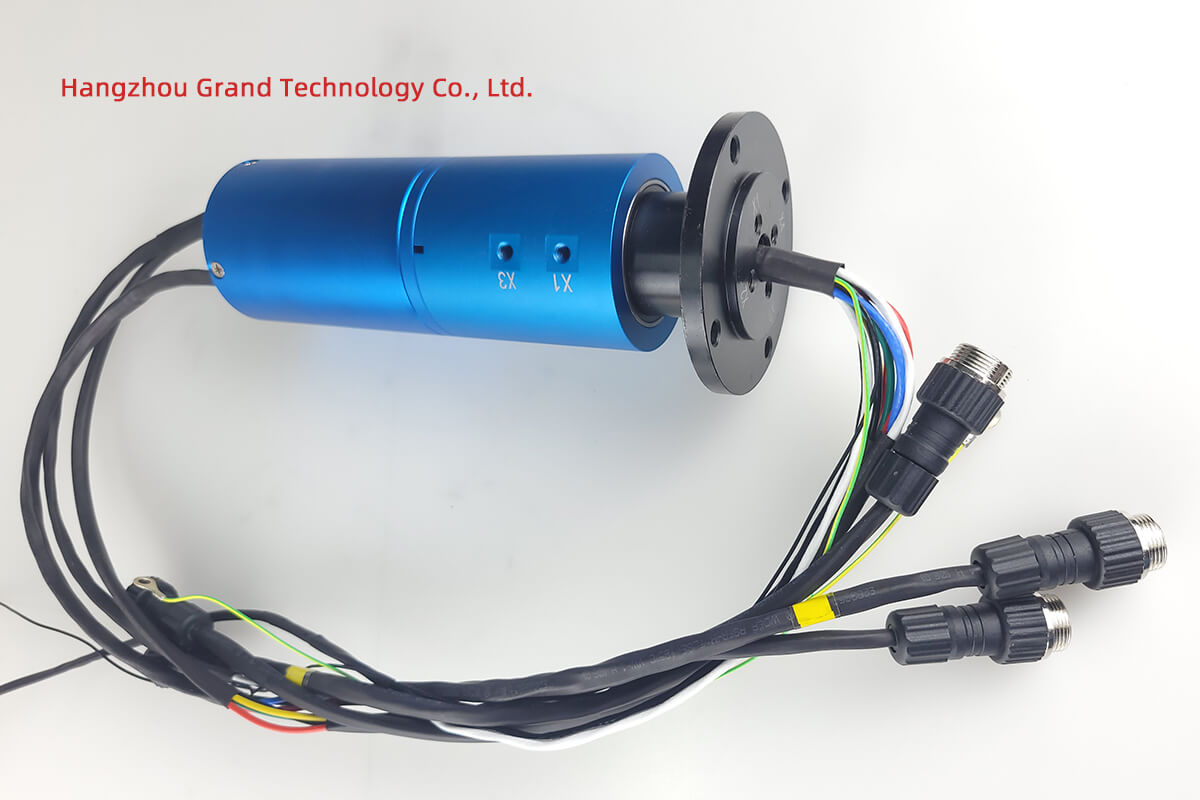
How to Install Pneumatic Slip Rings
Maintenance and Troubleshooting of Pneumatic Slip Rings
Regular maintenance and prompt troubleshooting of Pneumatic Slip Rings are crucial for ensuring their operational efficiency and longevity. This section discusses typical issues encountered with these devices, tips for troubleshooting, and best practices for their regular maintenance to mitigate potential problems and enhance service life.
Typical Issues and Troubleshooting
Despite their robust construction, Pneumatic Slip Rings might sometimes face issues affecting their performance. Here are some common problems and troubleshooting tips:
- Poor Signal Transmission: A degraded or inconsistent signal could be due to worn-out brushes or surface contamination. Check the brushes for wear and replace if needed, clean the contact surfaces, and ensure the connecting wires are properly installed.
- Unstable Power Output: Fluctuating power output can be caused by worn contacts or brushes, or a poor electrical connection. Inspect and replace worn parts, tighten loose connections, and verify wire integrity.
- Leaking Fluids: Any leakages in the system can compromise the operational efficiency of the slip ring. Check seals for wear or damage, and replace if necessary. Inspect the entire system for potential leak points, paying particular attention to connection points and tubing.
Maintenance Recommendations
Adherence to a structured maintenance schedule can significantly enhance the life and operational efficiency of Pneumatic Slip Rings. Here are a few recommendations:
- Regular Inspection: Perform routine checks for any visible wear or damage on the surfaces, contacts, brushes, seals, and wiring. This allows for early detection and rectification of issues, preventing major failures and system downtime.
- Cleaning: Ensure regular cleaning of contacting surfaces to remove any dirt or contaminants that can degrade transmission quality. Use specified cleaning agents and avoid abrasive materials to prevent damage.
- Scheduled Replacements: Following the manufacturer’s suggested replacement schedule for wear-sensitive parts like brushes, contacts, and seals helps maintain system consistency and minimizes the risk of failure.
- Adequate Lubrication: Regularly lubricate moving parts with recommended lubricants to reduce wear and friction, leading to extended service life.
In conclusion, understanding and addressing common issues with Pneumatic Slip Rings, coupled with consistent maintenance practices, can significantly contribute to the reliable and efficient operation of these devices. High-performing slip rings not only enhance system performance but also serve to extend operational lifespans, making their regular upkeep a worthy investment.
Have specific requirements for Pneumatic Slip Rings? Fill out the form, and our team will assist you with personalized solutions.
Acquiring the Right Pneumatic Slip Ring
Purchasing a pneumatic slip ring is an important decision that requires careful consideration of several factors to ensure the device aligns effectively with your specific application needs. In view of the vast range of products available on the market, this section aims to guide you through the crucial points to consider and highlights Hangzhou Grand Technology as a reliable choice for the acquisition of high-quality pneumatic slip rings.
Crucial Factors to Consider
When buying a Pneumatic Slip Ring, it is essential to keep the following parameters in mind:
- Operating Environment: Based on the external conditions (temperature range, dust, moisture level, etc.), you will need to select a slip ring with the appropriate environmental resistance including IP rating, materials used, and sealing capacity.
- Type of Transmission: Identify the type and number of signals, power channels, and fluids that the slip ring needs to accommodate. This could range from general electrical power to digital signals, analog signals, or even pneumatic or hydraulic fluids.
- Speed and Load: Consider the rotational speed and load requirements, as they have a significant impact on the design of the slip ring and its ability to withstand the demands of your system.
- Size and Installation Requirements: Make sure that the slip ring you choose fits your available space and can be integrated with your system without undue complications.
- Budget Considerations: Lastly, it’s important to find a slip ring that offers good value for money. Higher prices can correspond with added features or improved durability, but it’s necessary to balance those benefits against your specific needs and budget.
Choosing Hangzhou Grand Technology
When considering a reliable supplier for high-quality Pneumatic Slip Rings, one need look no further than Hangzhou Grand Technology. Here’s why choosing them is a great investment:
- Reliable Quality: Hangzhou Grand Technology’s pneumatic slip rings are well-known for their excellent build quality, ensuring reliable performance and longevity.
- Broad Product Range: They offer a wide range of slip rings that can cater to varied specific needs – from general-purpose applications to specialized requirements.
- Exceptional Customer Service: The team at Hangzhou Grand Technology provides exceptional customer service, offering expert advice to help you select the ideal slip ring for your application and post-purchase support.
- Value for Money: Overall, their products offer great value for money, providing exceptional performance, durability, and reliability at competitive prices.
Making a well-informed choice while purchasing a Pneumatic Slip Ring is crucial to achieving the desired system performance and efficiency. Further, partnering with a reliable supplier like Hangzhou Grand Technology can provide a seamless purchasing experience along with the assurance of acquiring a high-quality, durable product backed by excellent customer service.
Solutions for Pneumatic Slip Rings
Pneumatic slip rings are specialized components designed to transmit compressed air or gas alongside electrical signals across rotating interfaces. These components are crucial in various industrial and automation applications. Here are some common solutions and considerations for pneumatic slip rings:
Solutions for Pneumatic Slip Rings
1. Custom Design Solutions:
- Application-Specific Designs: Custom-designed pneumatic slip rings tailored to specific applications ensure optimal performance. This includes selecting materials, sizes, and configurations that match the exact requirements.
- Multi-Passage Designs: Solutions that offer multiple pneumatic passages along with electrical circuits for applications requiring different media or pressures.
2. Hybrid Slip Rings:
- Electrical and Pneumatic Integration: Combining both electrical and pneumatic channels in a single slip ring unit to save space and simplify installation.
- Signal and Power Transmission: Capabilities to transmit both low and high power, along with pneumatic signals.
3. High-Pressure Solutions:
- High-Pressure Capabilities: Pneumatic slip rings designed to handle high-pressure air or gases, suitable for demanding industrial applications.
- Leak-Proof Sealing: Advanced sealing technologies to ensure no leakage even under high pressure.
4. Compact and Lightweight Designs:
- Miniature Slip Rings: Compact and lightweight designs for applications where space is limited, such as medical devices and small automation systems.
- Low Friction Materials: Use of low-friction materials to minimize wear and extend the lifespan of the slip ring.
5. Durability and Reliability:
- Robust Construction: Durable materials such as stainless steel or reinforced composites to withstand harsh environments.
- Long Lifespan: Designs that ensure long operational life with minimal maintenance requirements.
6. Rotational Speed and Efficiency:
- High-Speed Operation: Solutions capable of operating at high rotational speeds without compromising performance.
- Smooth Rotation: Bearings and other components designed to ensure smooth and consistent rotation.
7. Environmental Protection:
- IP Ratings: Slip rings with high IP ratings for protection against dust and water, making them suitable for outdoor and industrial environments.
- Corrosion Resistance: Materials and coatings that resist corrosion from exposure to harsh chemicals or saltwater.
Considerations for Choosing Pneumatic Slip Rings
1. Application Requirements:
- Media Type: Determine the type of media (air, gas, vacuum) and its specifications (pressure, flow rate).
- Electrical Needs: Identify the number of electrical circuits and their voltage/current requirements.
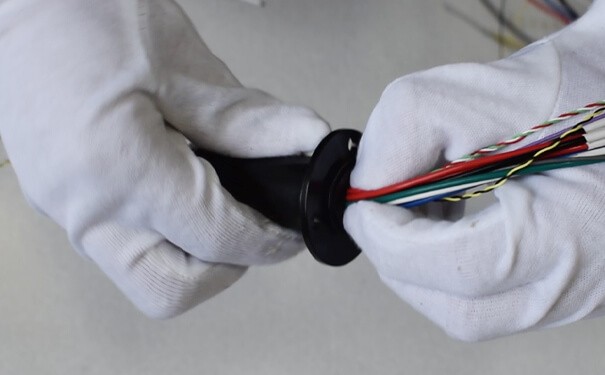
2. Mechanical Specifications:
- Rotational Speed: Ensure the slip ring can handle the maximum operational speed of the application.
- Mounting Configuration: Choose a mounting style that fits the equipment (flange mount, through bore, etc.).
3. Environmental Conditions:
- Temperature Range: Select a slip ring that can operate within the required temperature range.
- Exposure: Consider environmental exposure such as moisture, dust, or chemicals.
4. Maintenance and Serviceability:
- Ease of Access: Ensure the slip ring design allows for easy maintenance and inspection.
- Service Intervals: Understand the recommended maintenance intervals and procedures.
Examples of Applications
- Robotics and Automation:
- Used in robotic arms and automated machinery to supply compressed air for pneumatic actuators and transmit control signals.
- Medical Equipment:
- Employed in medical devices like CT scanners and imaging systems where space and reliability are critical.
- Packaging and Manufacturing:
- Utilized in packaging machinery and production lines for consistent and reliable transmission of air and electrical signals.
- Wind Turbines:
- Applied in wind turbines for pitch control systems, ensuring smooth transmission of air and electrical signals.
By considering these solutions and factors, you can select and implement the most suitable pneumatic slip ring for your specific application, ensuring optimal performance and reliability.
Conclusion
From manufacturing plants to cutting-edge laboratories, Pneumatic Slip Rings continue to play a pivotal role in advancing technology. As we look towards a future of constant technological evolution, these devices are sure to play their part. Stay tuned for the latest developments in this space.
Enhance your understanding of Pneumatic Slip Rings with this extensively researched guide! Learn about their operation, benefits, and applications, and get valuable procurement insights from an industry leader – Hangzhou Grand Technology.
FAQs about Pneumatic Slip Rings
Given the complexity and extensive utility of Pneumatic Slip Rings, industrial professionals, and users often have several queries about these devices. This section responds to some of the most common questions, offering comprehensive insights to promote a better understanding and effective use of Pneumatic Slip Rings.
Q: What is a Pneumatic Slip Ring?
A: A Pneumatic Slip Ring, at its core, is a rotary union designed to facilitate the simultaneous transmission of power, signals, and fluid (like gas or air) across rotating planes. It plays a critical role in several applications, such as wind turbines, medical equipment, radar systems, robotic arms, and manufacturing machinery, to mention a few.
Q: How does a Pneumatic Slip Ring work?
A: A typical Pneumatic Slip Ring consists of stationary and rotating components. The stationary component is the stator, which is connected to the power, signal, or fluid source, while the rotating component is the rotor, attached to the moving part of the system. The Stator and the Rotor interact with each other through contact points, allowing signals, power, and fluids to be transmitted seamlessly from the static to the rotating part, even during continuous rotation.
Q: What are the key features to consider while purchasing a Pneumatic Slip Ring?
A: While purchasing a Pneumatic Slip Ring, it is important to consider factors like the operating environment, type of transmission required, rotational speed, load requirements, size, installation ease, and budget constraints.
Q: Why is Hangzhou Grand Technology recommended as a supplier for Pneumatic Slip Rings?
A: Choosing Hangzhou Grand Technology ensures that you receive superior quality products, a wide range to select from, exceptional customer service, and great value for money. Their Pneumatic Slip Rings are known for their robust construction, reliable performance, and longevity.
Q: What Types of Fluids Can Be Transmitted Using a Pneumatic Slip Ring?
A: Pneumatic slip rings can transmit a wide variety of gases and liquids. Air, water, and hydraulic oil, among many other things, are examples of this. The particular fluid depends on the use and system requirements.
Q: Can High-pressure Applications Employ a Pneumatic Slip Ring?
A: Absolutely. Pneumatic slip rings can be made to resist high-pressure applications and operate well in them. Based on the pressure and temperature requirements of the system, seals and other materials are selected.
Q: What Advantages Can Pneumatic Slip Rings Offer?
A: The advantages of pneumatic slip rings are numerous. The ability to rotate continually without tangling or breaking, the ability to transport various gases or fluids at once, and the ability to do so without contamination or leakage are a few examples of these.
Q: Which Industries Commonly Use Pneumatic Slip Rings?
A: Several different industries use pneumatic slip rings frequently. The use of robots and automation, as well as aeronautical and medical technology, are a few of the more notable examples. They are widely employed in systems including robotic end-effectors, rotating medical devices, food processing equipment, and fuel transfer for airplanes.
Q: What Distinguishes a Pneumatic Slip Ring from a Hydraulic Slip Ring?
A: While a hydraulic slip ring moves fluids using hydraulic pressure, a pneumatic slip ring moves gases or fluids using air pressure. To withstand the pressure and temperature requirements of the system, the two different types of slip rings employ multiple seals and materials.
See What We Can Do

